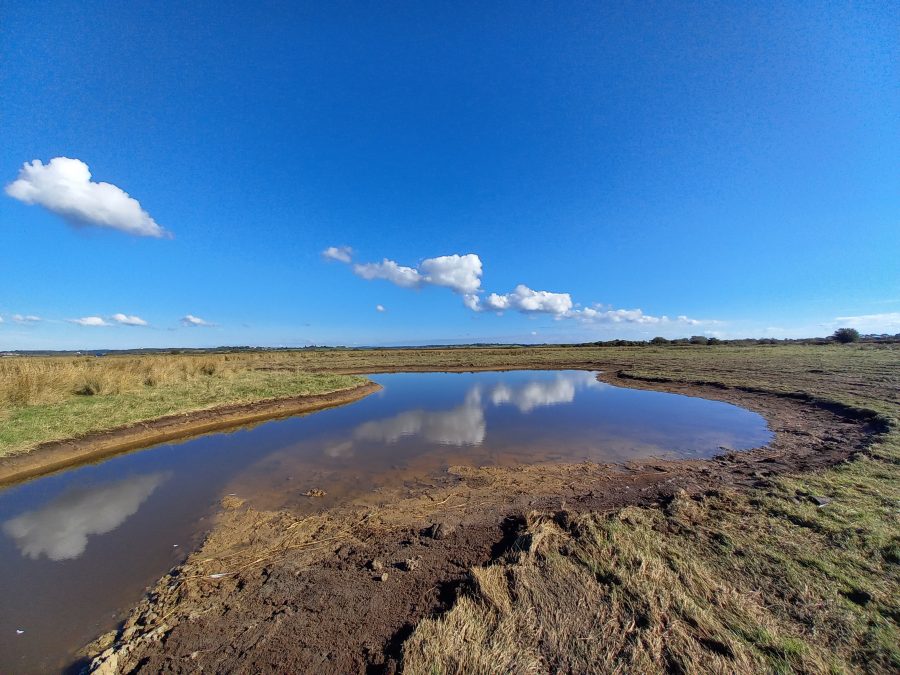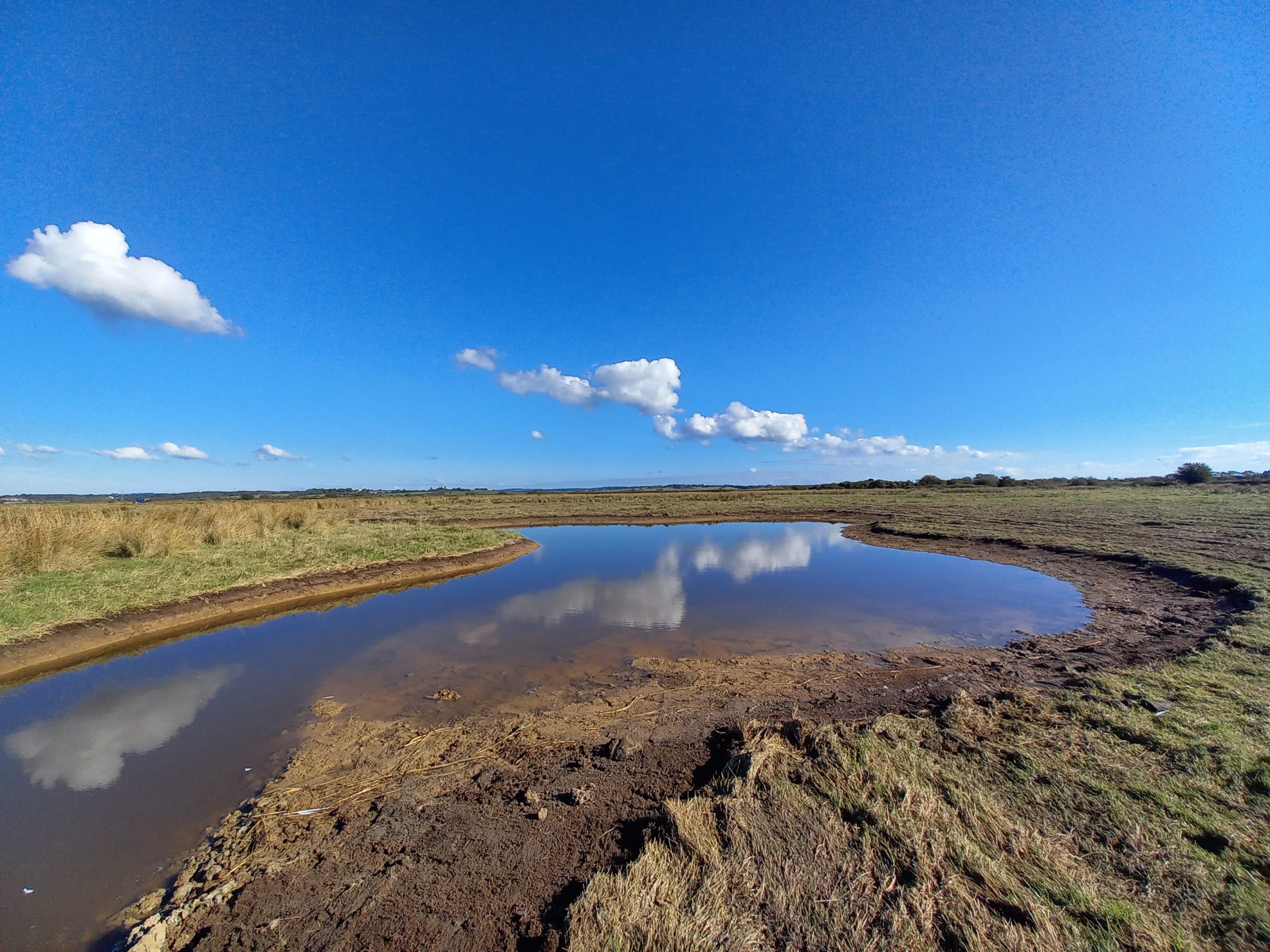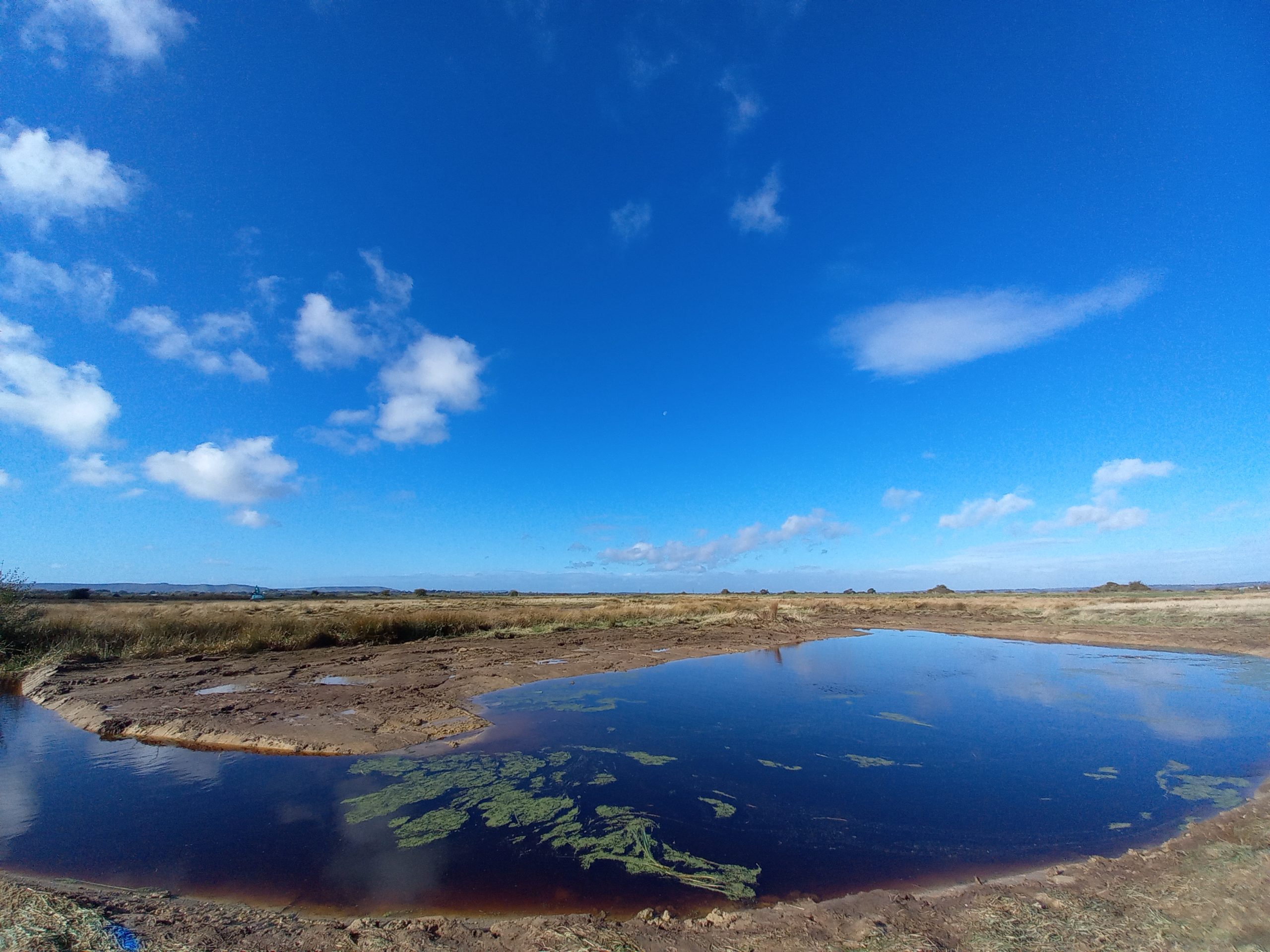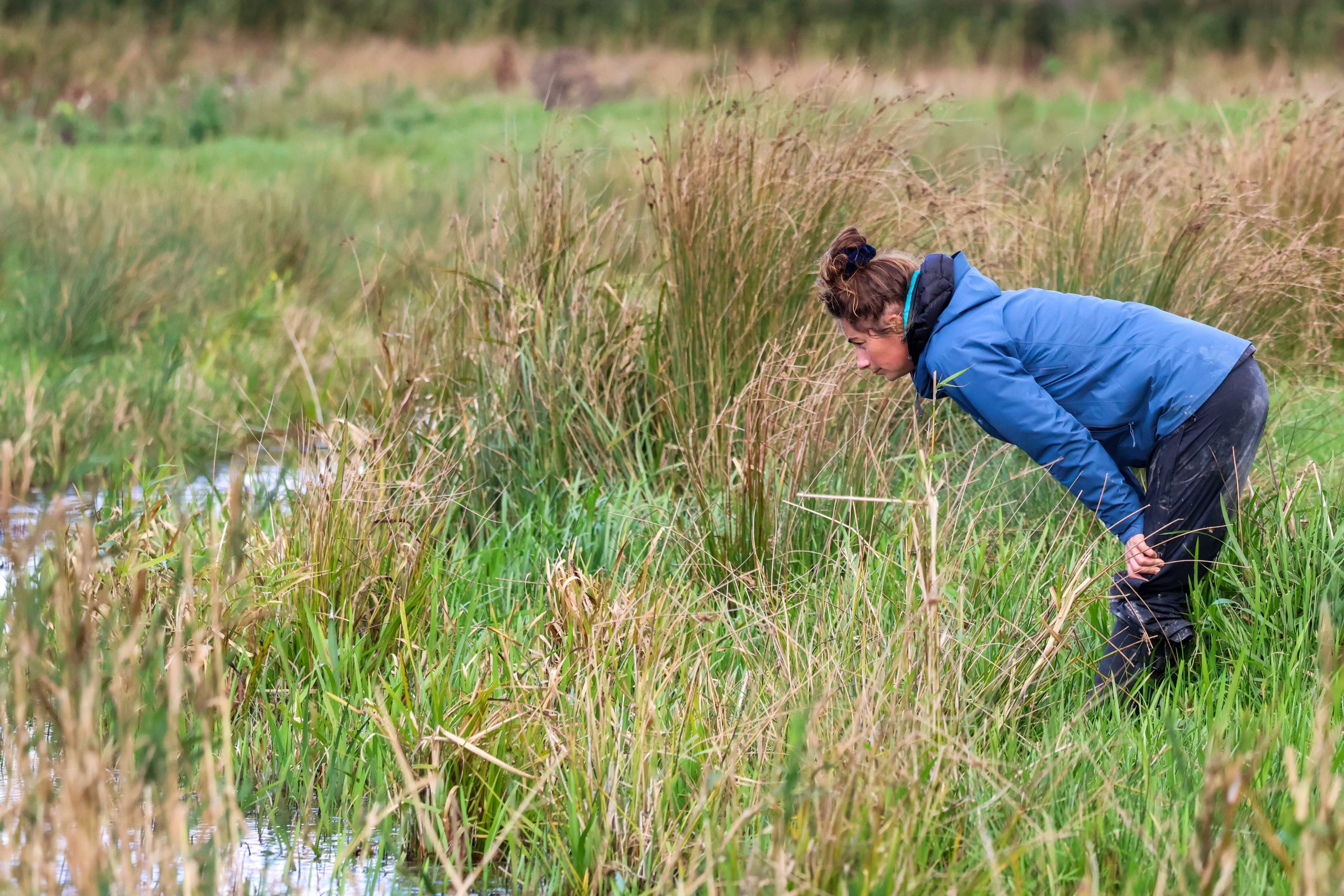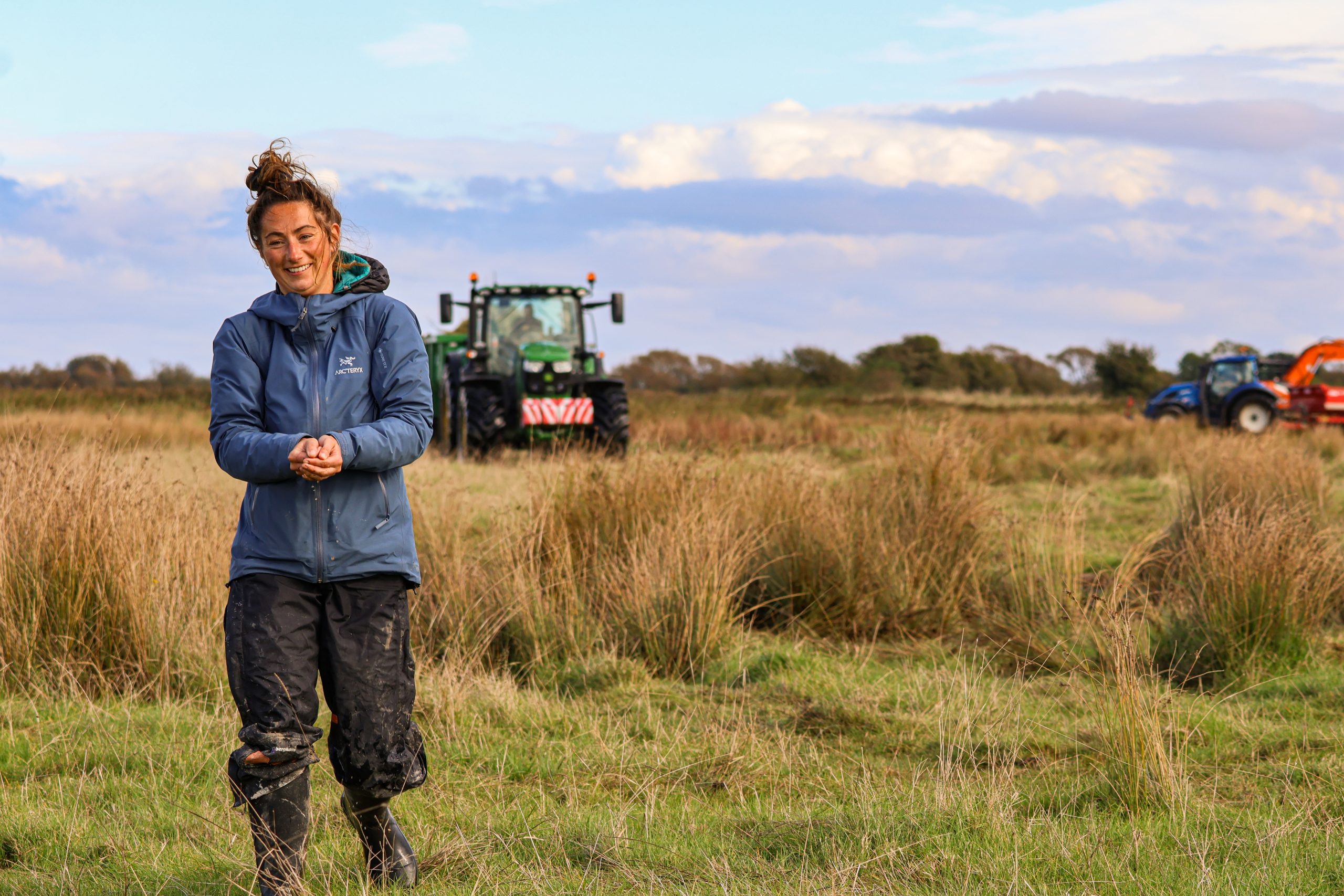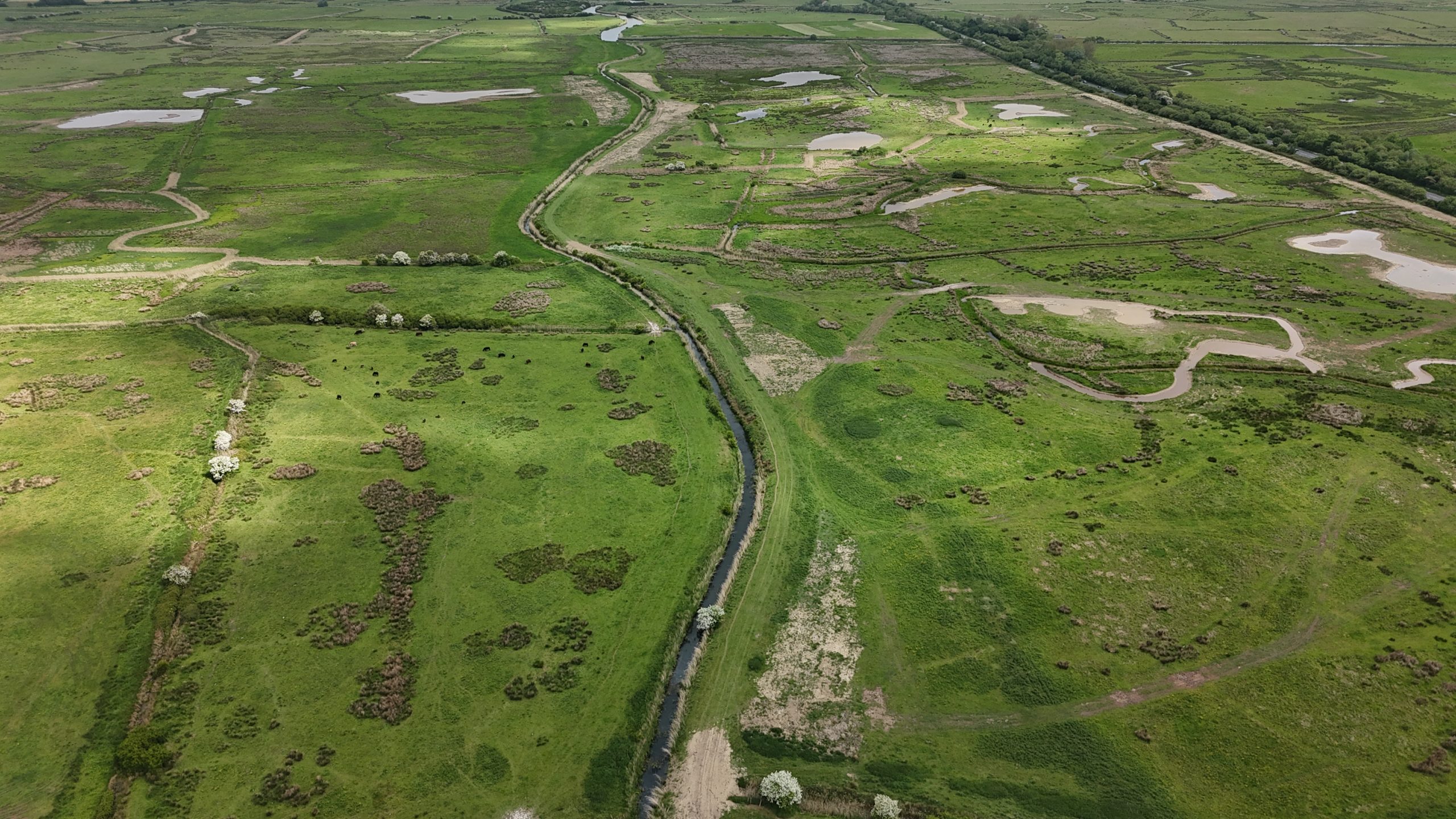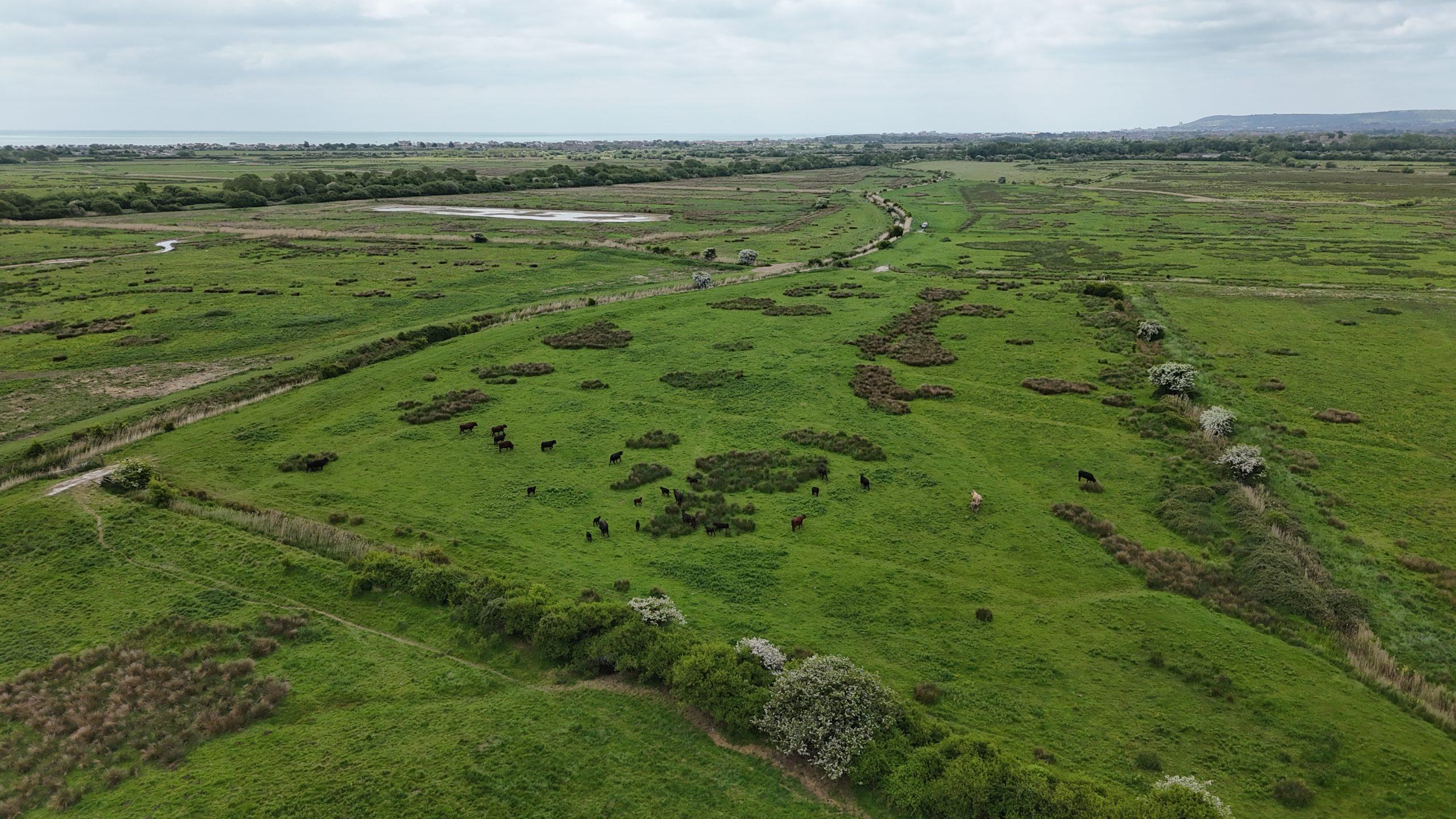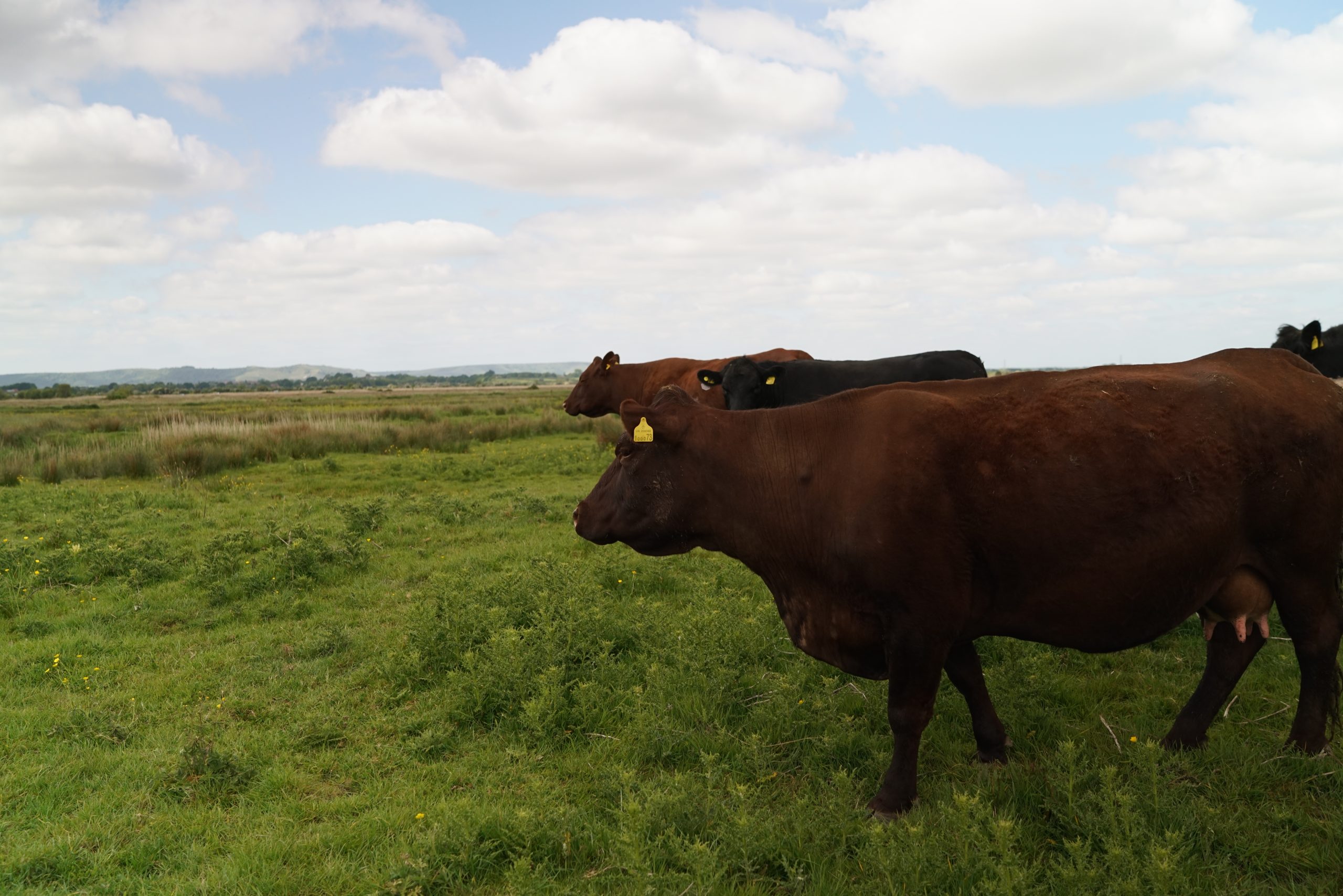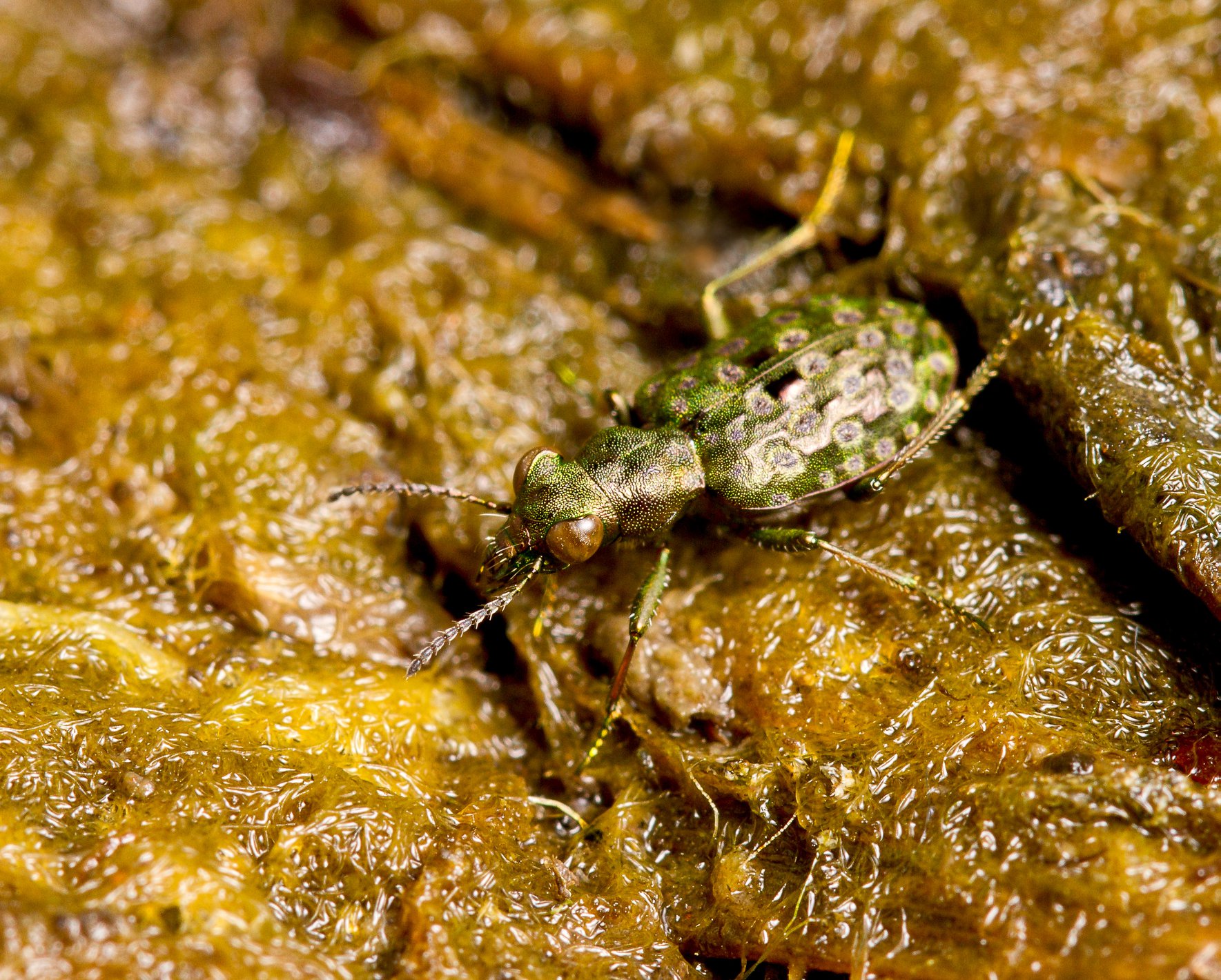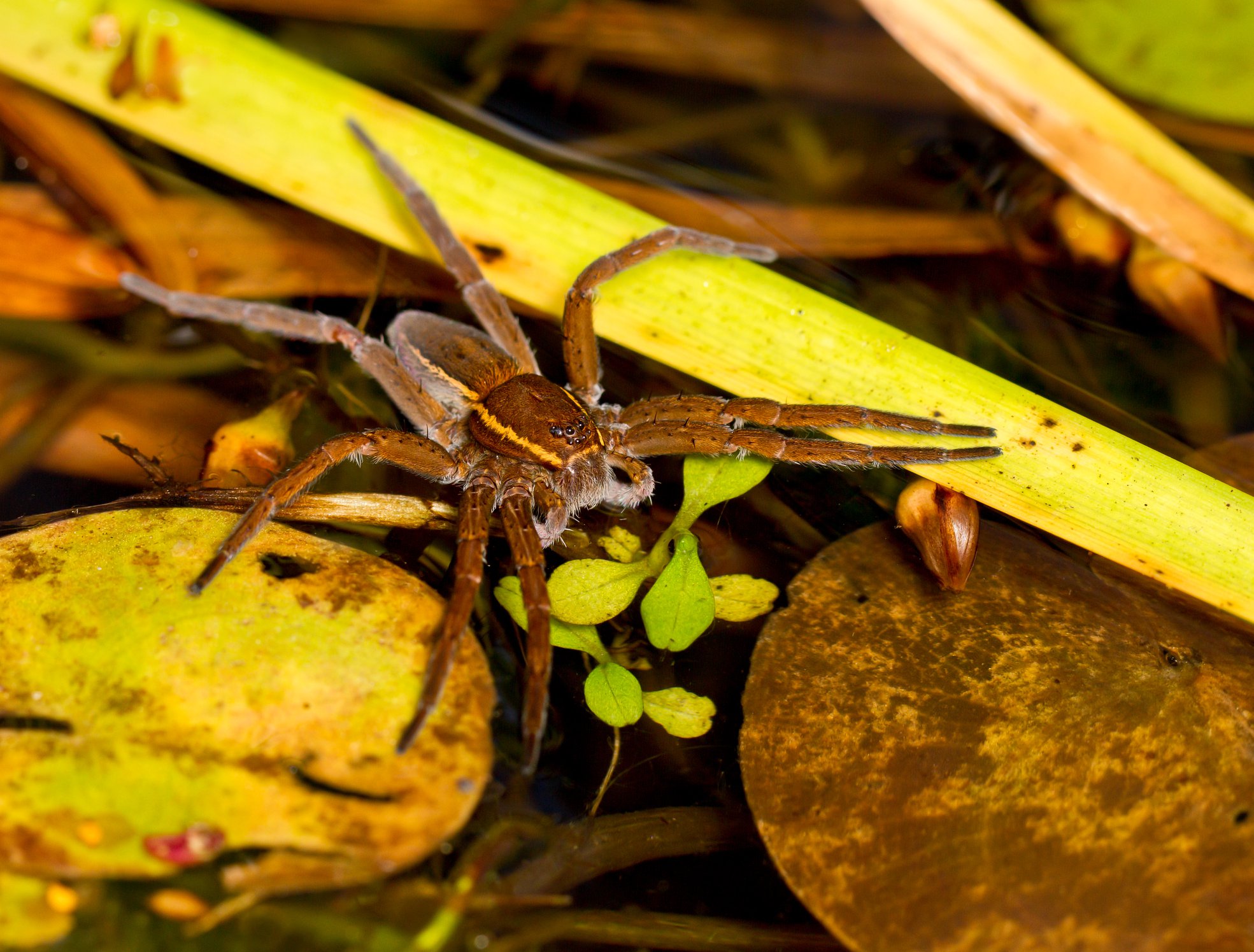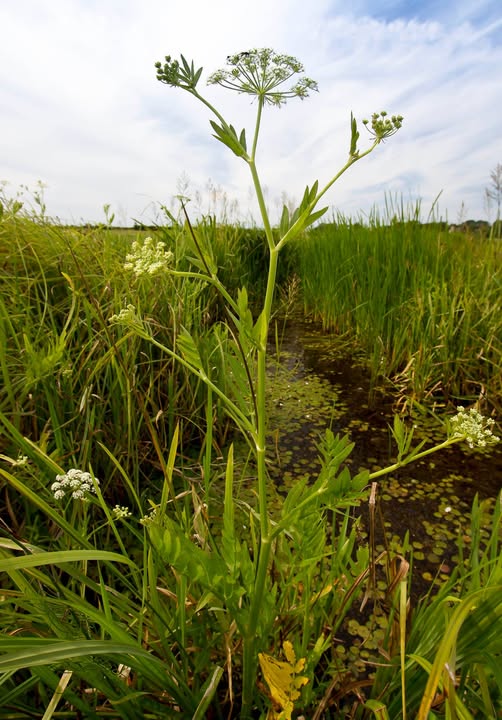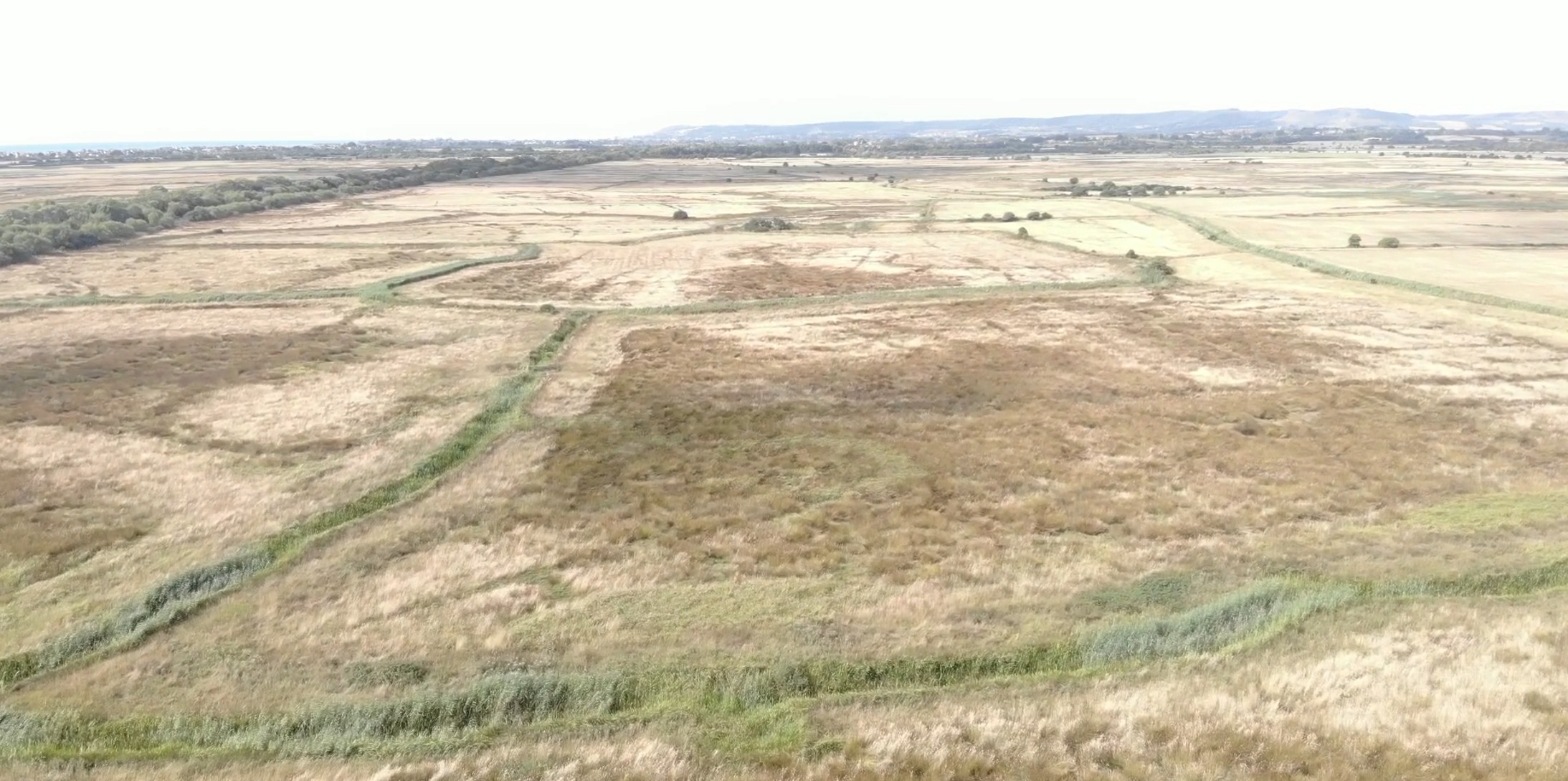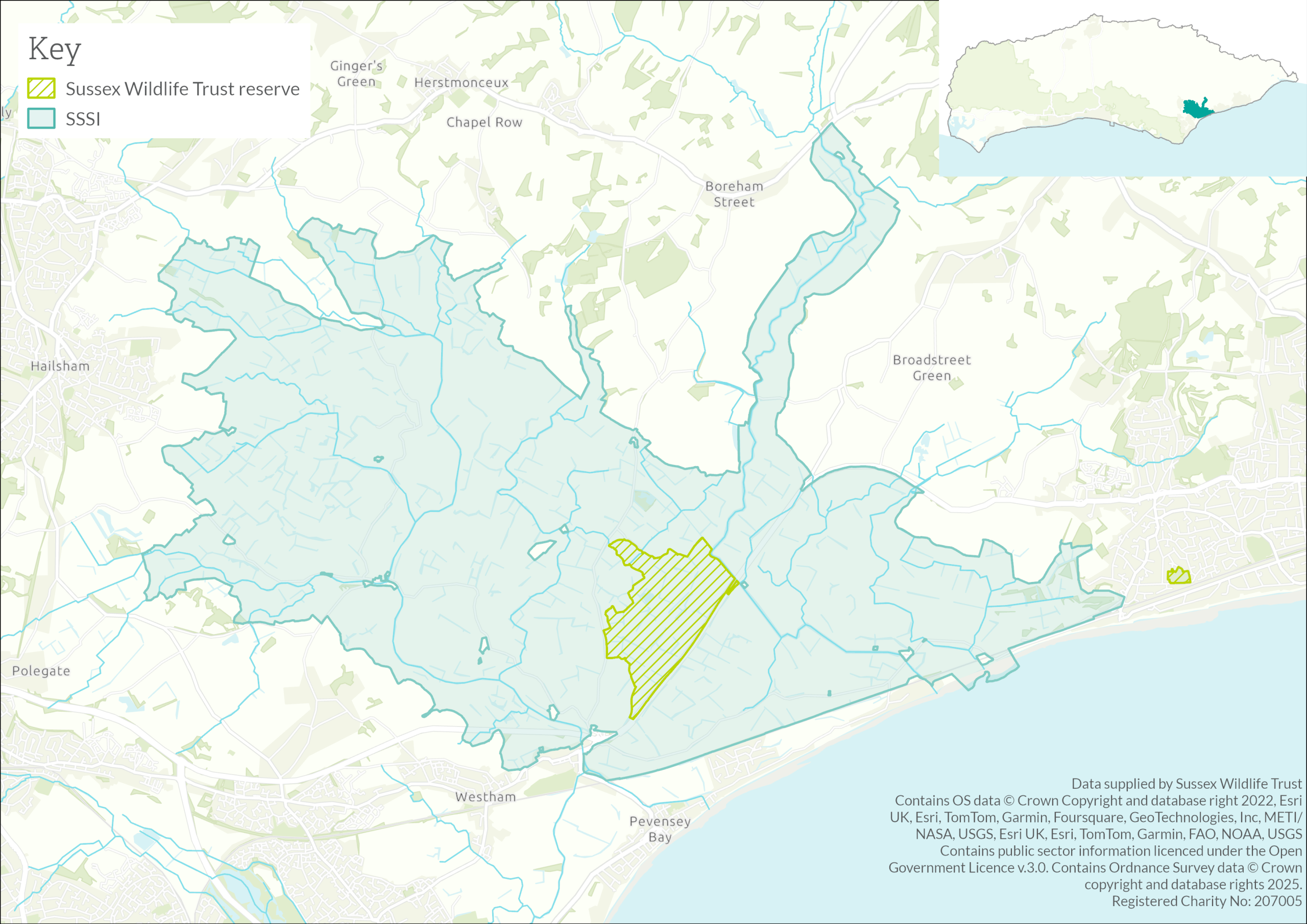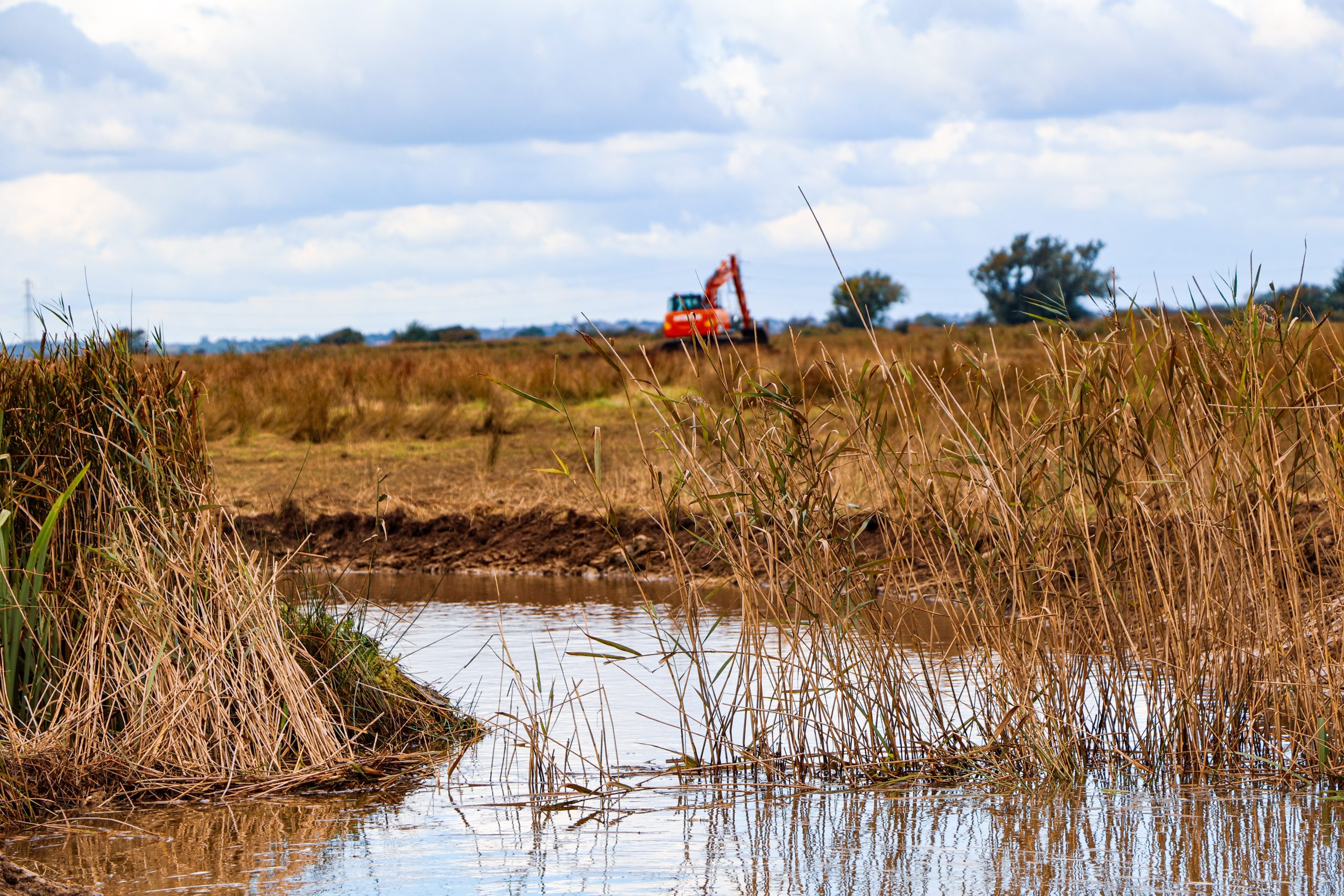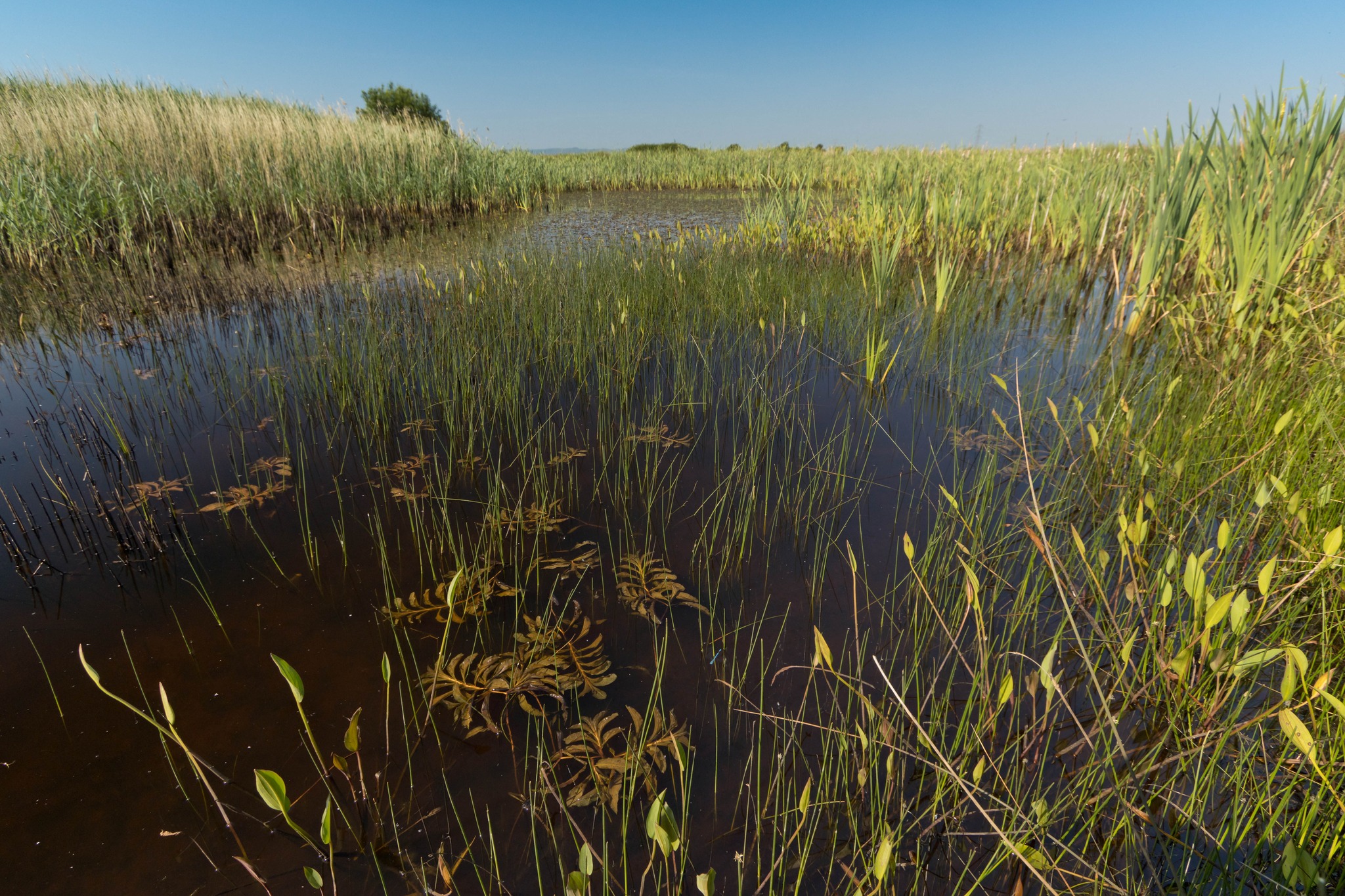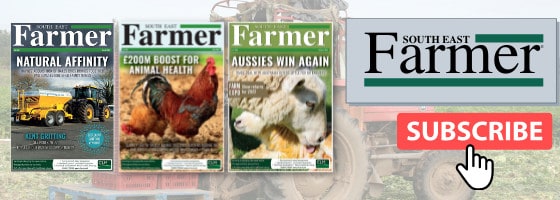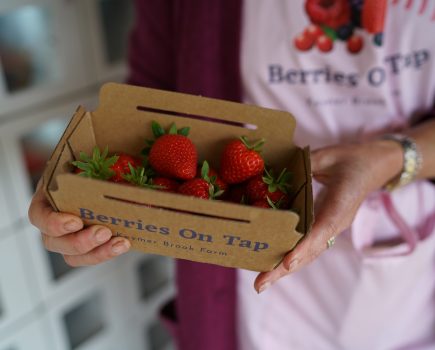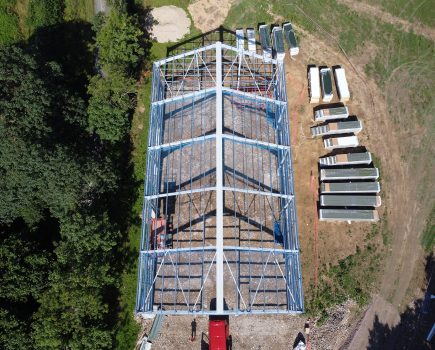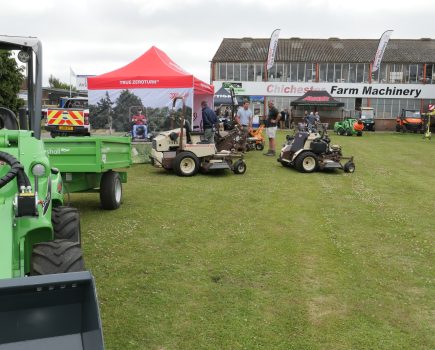This month Nigel Akehurst meets Sussex Wildlife Trust nature recovery project officer Charlotte Pestell to learn more about an ambitious and inspiring wetland restoration project on the Pevensey Levels in East Sussex.
Stretching across 3,500 hectares of low-lying land between Eastbourne and Bexhill, the Pevensey Levels is one of the most ecologically significant wetlands in the South of England. It’s a landscape of ditches, wet grasslands and ancient grazing marsh, home to a wealth of rare flora and fauna.
Amongst its residents are the endangered fen raft spider, 25 species of rare aquatic mollusc and 16 species of dragonfly and damselfly, including the striking hairy dragonfly, but this unique landscape has been under growing pressure from climate change, intensive land use and fragmented management.
Now, thanks to a collaborative restoration initiative led by Sussex Wildlife Trust (SWT) in partnership with local farmers and Natural England and backed by £600,000 from National Highways’ Network for Nature programme, the tide is beginning to turn. Through rewetting, habitat creation and farmer engagement, a new chapter is being written for the Levels, one that places nature, food and people at its heart.
A brief history of the Pevensey Levels
Once a vast tidal bay, the Levels slowly filled with silt over millennia. By the medieval period, the area had become a patchwork of hand-drained meadows and pastures, criss-crossed by ditches (or “sewers” as they’re known locally). Livestock grazing has long been central to its character – and to the upkeep of its delicate wetland ecology.
The Levels were designated a Site of Special Scientific Interest (SSSI) in 1990 and later received Special Area of Conservation (SAC) and RAMSAR status, recognising their international importance. But despite these protections, intensive drainage and changing land practices took their toll, leading to biodiversity decline and the disappearance of key species.
Sussex Wildlife Trust
In 1996, Sussex Wildlife Trust acquired more than 150 hectares on the Levels. Since then, the charity has worked to reverse ecological decline through land management, ditch restoration and community outreach.
Its latest flagship project is focused on rewetting key areas of its own reserve by re-profiling ditches, creating scrapes and encouraging natural flooding. Crucially, the approach is collaborative, working with farmers to ensure food is still produced in ways that benefit wildlife and build long-term landscape resilience.
Challenges and early signs of recovery
SWT Head of Nature Reserves Jamie Parsons led the project design, using LIDAR mapping from the Environment Agency to identify low spots ideal for scrapes and new ditches.
Planning began in earnest in July 2023, but securing permissions was tricky. “It wasn’t straightforward,” admitted Charlotte. “It’s quite a novel project for the area.”
Approval finally came in early autumn 2024, just as one of the wettest Septembers on record hit. Dumper trucks got bogged down in the mud, and work ground to a near halt.
Thankfully, three tracked dumper trucks were sourced from Wales, allowing contractors FGS Pilcher, Clarity Ecoworks and local contractor Darren Walker to resume operations, undertaking digging work under the watchful eye of archaeologists.
One scrape even revealed a suspected Iron Age settlement. “We’re still waiting on the final report,” said Charlotte, “but it was an exciting find and adds an extra layer of cultural significance to the project.” Despite the challenges, most earthworks were completed on budget by December 2024, with just one scrape and ditch deferred until the summer.
The results are impressive: over three kilometres of re-profiled ditches, 30 tennis courts’ worth of new wetland and 15 football pitches’ worth of re-flooded landscape. Monitoring has shown promising signs and bird counts are up, with larger flocks of lapwing spotted enjoying the new pools and scrapes, alongside ducks, geese and even majestic Marsh Harriers soaring above.
“It’s still early days,” Charlotte said. “But the winter gave us the conditions we needed. If lapwing breed successfully this year, that’s a huge milestone.”
The new pools are holding water well, even after one of the driest springs on record, demonstrating the resilience of the design. “These wetlands act like giant sponges, slowing floodwaters and creating habitat. We just need to give them room to function,” added Charlotte.
Managing water
Raising water levels is not without its challenges. It must be carried out with care to avoid unintended consequences for neighbouring farms. This is where local knowledge and trust become essential.
The Pevensey and Cuckmere Water Level Management Board plays a crucial role in managing the complex network of sluices and pumps. Its expertise ensures that water levels can be flexibly managed, allowing the higher levels needed for the emerging ‘archipelago’ wetlands to coexist alongside the lower levels required for traditional grazing systems.
Future plans – creating an archipelago of nature hotspots
Looking ahead, SWT and partners hope to develop a network of wetland ‘islands’ across the Levels, an archipelago of interconnected nature hotspots that offer refuge and connectivity for wildlife.
Martin Hole, co-founder of the Pevensey Farmers Group and one of the partner farmers involved in the SWT project, is keen to emphasise that the vision is not about rewilding everything. “We want to work with what’s already here, supporting low-intensity, nature-friendly farming alongside carefully managed restoration zones,” he explained.
For Martin, water is the unifying thread across the landscape. “To the eye of a bird,” he said, “water in the wider landscape is the essence of making the wetland work for all the species that use it.”
Pevensey Farmers – a growing movement
Founded in 2017 and facilitated by the Farming and Wildlife Advisory Group (FWAG) South East, the Pevensey Farmers Facilitation Fund now links over 30 local farmers. The group has fostered a strong sense of community and shared learning through winter lectures, farm walks and collaboration with external stakeholders.
With the DEFRA funding due to end this year, facilitator Prim Duplessis believes the group is ready for its next chapter. “The Facilitation Fund has done what it set out to do – bring people together. Now it’s time to build on that momentum.”
The group is actively exploring new funding models, from biodiversity net gain and carbon credits to private investment. Plans are underway to establish a Pevensey Farmers Community Interest Company (CIC) to take this work forward.
In a recent ‘mapping session’, members developed a pipeline of investable projects, from habitat and species recovery to a possible Pevensey Farmers food brand linking local produce with the landscape.
Among their current efforts is a water vole recovery project initiated by the Facilitation Fund and now led by Martin and his daughter Romney. With support from Waterlife Recovery Trust and the High Weald Nature and Community Fund, they’ve now deployed 25 mink traps across the Levels, removing 62 mink to date.
Looking ahead
Wrapping up our chat, I asked Charlotte what she made of the emerging natural capital markets such as biodiversity net gain.
She was cautiously optimistic, acknowledging there would be teething issues, but emphasised the importance of properly valuing land and its biodiversity.
“We need to embrace these schemes,” she said. “It all depends on everyone in the chain – local planning authorities, consultants, land managers – doing their bit. But when it works, it can all align.”
With projects like the Sussex Wildlife Trust’s wetland restoration demonstrating what’s possible in a relatively short time, the future of the Pevensey Levels is looking more promising than it has in decades. What’s emerging is more than just a restored wetland; it’s a compelling model for how low-input farming and nature can thrive together in a changing climate.
- Charlotte Pestell
- Charlotte Pestell
- Elaphrus ground beetle; a hunter on bare, wet mud
- Fen Raft Spider
- Greater Water Parsnip
- Hydaticus seminiger Water Beetle (with go-faster stripes.) One of the many water beetlesCommon on the Pevensey Levels.
- Pevensey Levels before
- Pevensey Levels map
- Pondweeds in a biodiverse Pevensey Levels pond
For more like this, sign up for the FREE South East Farmer e-newsletter here and receive all the latest farming news, reviews and insight straight to your inbox.

